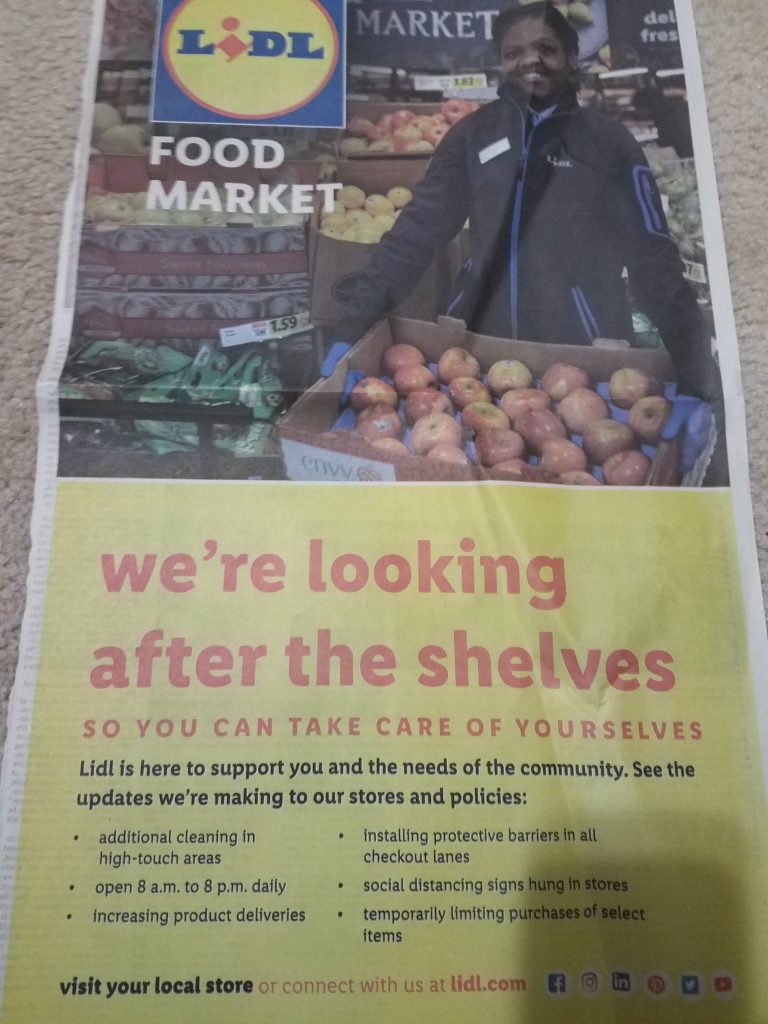EDITOR’S NOTE: This post has been updated to reflect AP Stylebook guidance on how to write COVID-19.
Marketing and communications go on, but as discussed in the last blog post, not everything is the same in the world where COVID-19 has sickened many, scared more, and generally, upended what we consider normality. That said, some marketing works better than others.
Let’s start with what doesn’t work.
Here’s an email that I received from a real estate agent (someone I met at a networking event and added me to her list without my express consent, but that is another story).
Hello.
Your health and safety are important to me. That’s why I’m reaching out to let you know that we’re doing what we can to provide the best service possible during this time, and that means being here for you.
Please reach out with any questions that you may have, or if I can be helpful in any way.
We will get through this together.
If you want to keep up to date on COVID-19, visit the CDC’s website.
Stay well,
[Name]
Why is this so bad? First, the sender claims that my health and safety are important, but provides no specifics about what she is doing. Second, she is placing the onus on me to contact her. And third, she says I can visit the CDC website, and she doesn’t even provide a link in her email. To me, this email shows that this real estate agent does not have any type of communication strategy or understanding, and to make matter worse, she doesn’t know how to use communication tools effectively.
What does work?
1. Specificity and relevance
What is your company or organization doing specifically because of or in response to COVID-19.
This full page ad from LIDL is exactly right: it tells you what specific actions its stores are taking to deal with the virus and the associated issues.
2. Segmentation
If you have an email marketing strategy, it should include the ability to segment your list into different audience types. The idea is to not send the same email to everybody on your list, but to be more targeted. For example, Boston University (where I went to grad school) keeps sending me updates, including updates about campus being closed. Well, as an alum, this is not exactly relevant to me. I am not a parent of a student or a student, so why do I need multiple emails about campus operations?
3. News/real updates
I got an email from a local bookstore that tells me that it has established a partnership with a national service in order to be able to deliver nationwide. That’s news. On the other hand, Delta has sent me the same version of an email regarding how its handling COVID-19. Nothing new, no reason to keep sending me the same email. If Delta were to add or delete flights or routes, then yes, tell me. But telling me its hard on Delta’s bottom line, over and over, is really self-serving, which brings me to the next point.
4. Audience-centered
What does your audience need or want right now? My undergrad university, Brandeis, did something really smart. Brandeis figured out that its audience is probably getting a bit bored being inside, so it sent out an email with suggestions for movies and television shows to watch, all featuring an alumni connection. There was no other reason for the email but to provide some relief to its audience. That is how you put your audience first.
What have you seen that works and that doesn’t work? Please share in the comments.
About Deborah Brody
Deborah Brody writes and edits anything related to marketing communications. Most blog posts are written under the influence of caffeine.



